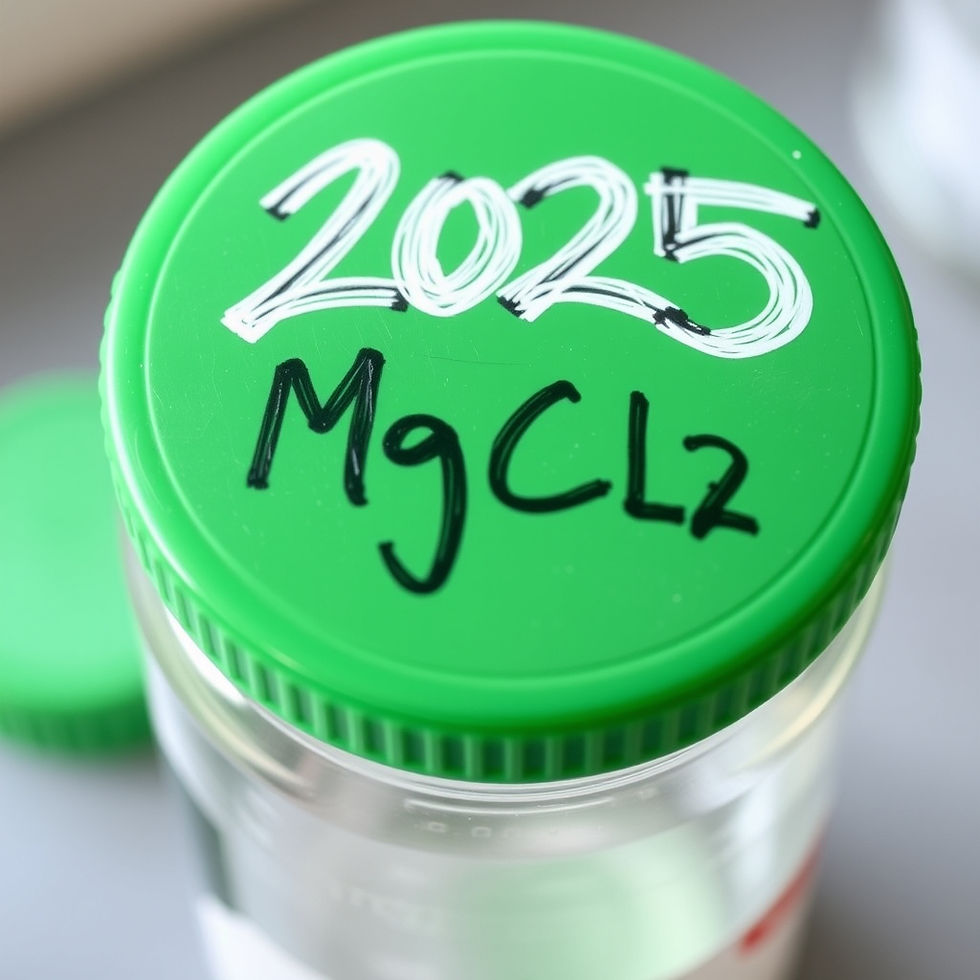Beer's Law Lab: A simple introduction to spectrophotometry
- Brennan Koch
- Sep 26
- 4 min read
Beer’s Law is used all over chemistry. This week I used it in both AP chemistry and grade level chemistry. But in order for my AP kids to be efficient, they needed to have done a simple Beer’s Law lab before. I designed the Blue Water lab as a way to teach the grade-level kids the basics. They had fun learning how to use the spectrophotometer and I had fun planting a little Easter egg in the lab for them to discover. Here’s how I did it. (Plus the writeup linked at the bottom)

Explain the goal
The goal of the lab is to discover how many grams of copper (II) sulfate (you can also use copper (II) nitrate) that I dissolved into 100 mL of water. I labeled the Erlenmeyer flask as “Unknown”, and everyone is trying to solve the same problem. You can also make three different unknown solutions and have the groups try to figure them out.
Teach the relations between absorption and transmittance
At the grade level, I teach this relationship qualitatively. That way I don’t have to explain the logarithmic nature of the equation A = -log(T). The kids can understand that as absorbance increases, then transmission decreases. This is good enough for grade level understanding.
Make a Beer’s Law Graph as a class
I assign each lab group a different amount of copper (II) sulfate to dissolve into 100 mL of measure the absorption. This year I did masses between 0.10 g and 1.75 grams. The students weigh out their copper (II) sulfate and record the mass. Then they dissolve it in a volumetric flask.

Pro Tip: Even when given instruction on mixing, kids won’t mix well. Have them transfer the solution from the volumetric flask to a beaker to increase the mixing and improve class results.
I have the class discuss what wavelength they should use in the spectrophotometer. I got good results using 700 nm this year, but I let them choose as a class. Did they want 667 this year? Yes. Yes they did.
The students then measure their absorbance with the spectrophotometer. They record their exact mass and absorption on the board. With classes of approximately 25, we were recording about 12 points on our line.
Create the spreadsheet, graph, and trendline
The students, who have already done the Noodle Conundrum lab earlier in the year (check out the blog about that lab here) already know who to do this… supposedly. Students input the data, create a scatter plot, insert the trendline, display both the r-squared value and the equation on the chart. Will everyone in the class have the same graph? Yep. Do you have time for each group to make their own standardized graph? Nope.

Remind them about dependent and independent variables
Is this a necessary step? Absolutely. Will you have to remind them all the way through the year and into AP chemistry? Absolutely. Will they still not know which variable to plug in? Absolutely. Keep reminding, reteaching, demanding that they be able to communicate this idea. I have a class discussion where they look at the equation of the trendline and talk about what X and Y stand for in the equation. Then they create a plan to determine the concentration of the unknown solution. I felt like the students coming up with the plan increased their understanding.
Measure the absorbance of the unknown
After the class develops a plan, each group can measure the absorbance of the unknown. But since they are all measuring the same unknown, I allowed them to make bigger groups so fewer readings (and therefore a smaller bottleneck) occurred at the spectrophotometer.
Calculate the concentration using the Beer’s Law graph.
Once the absorbance of the unknown has been measured, the students go back to their lab groups to calculate the concentration. Note: I don’t use molarity with my grade level students this early in the year. They don’t know how to calculate it, and hand-holding them through the process is a nightmare. Instead, I use g CuSO4 / 100mL. They can understand how that is a measurement of concentration. We will deal with molarity in the future.
Obviously, if you have already taught molarity, go for it. Another challenge with molarity is that students may not understand the idea of a hydrated compound yet. That means they will be adding up the molecular mass incorrectly without some additional teaching.
Reveal the answer
After the groups have calculated their answers, I do the big reveal. This year, in honor of stupidity the answer for our lab challenge was 0.67 g. The kids all did what they do nowadays when they see 67, they made a fuss. Then they started to look at me like, “Did you do that on purpose?” Maybe. Maybe not. As I move my hands up and down and shrug my shoulders. Maybe.
Here is the simple writeup I made. Enjoy.
Looking to up the level of engagement in your chemistry class? Use Stoich Decks games! These aren't time wasters. As a matter of fact they can become central to the way you teach the lesson. The kids are engaged with the game and you are laying down solid chemistry understanding. That's a win-win.





Comments